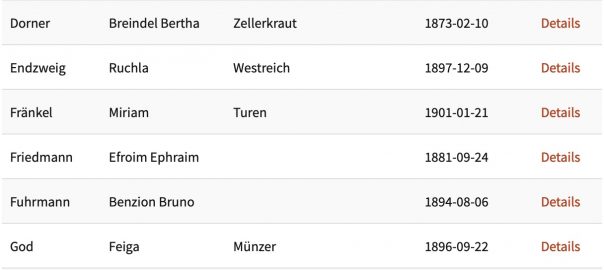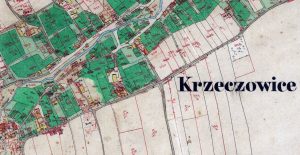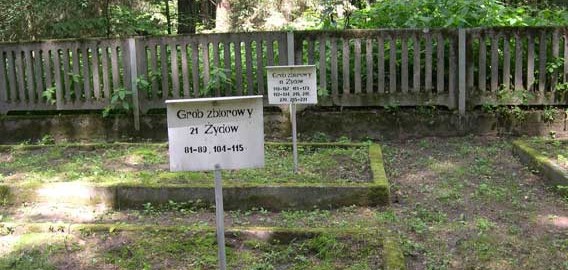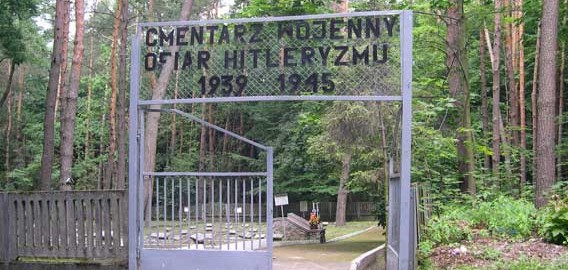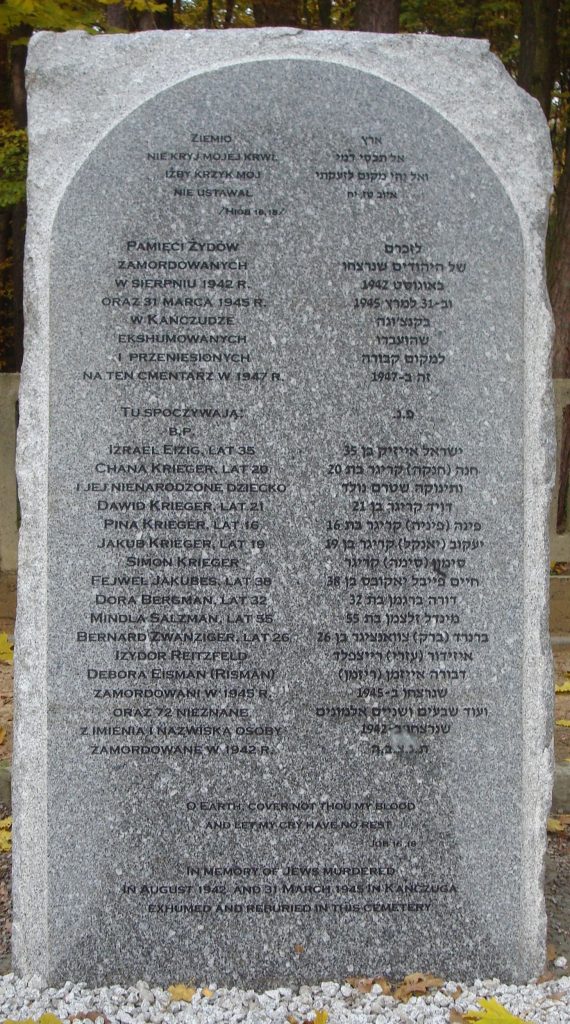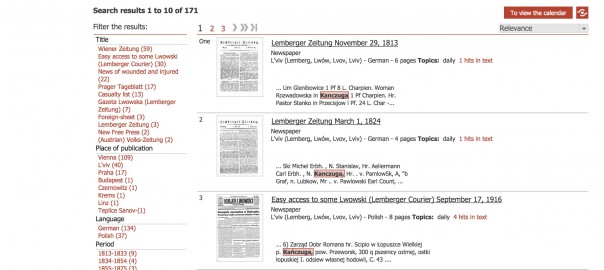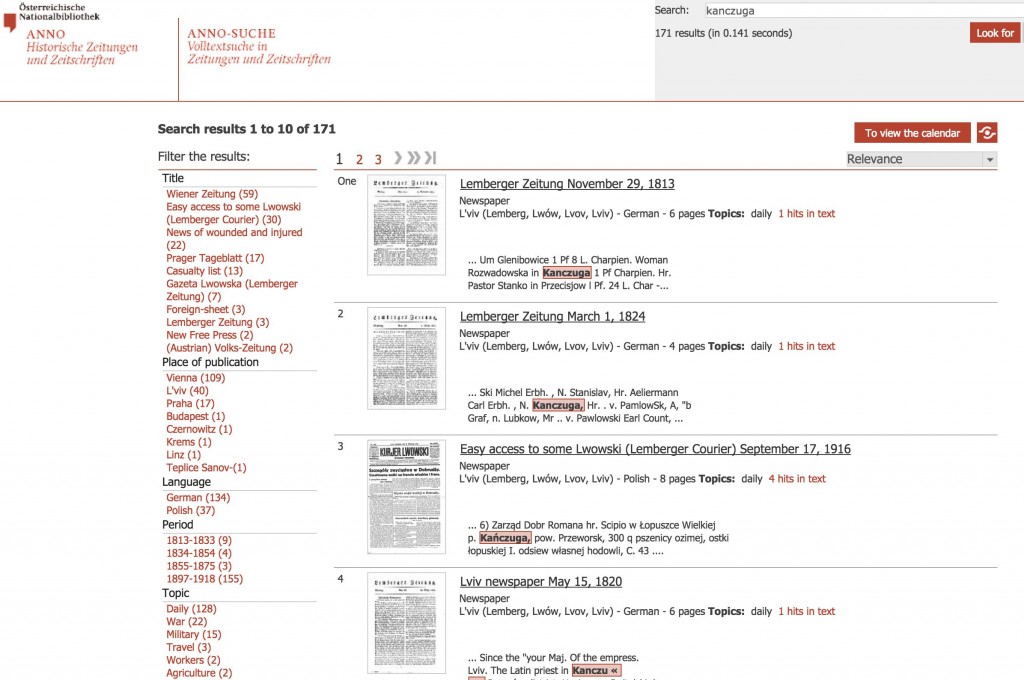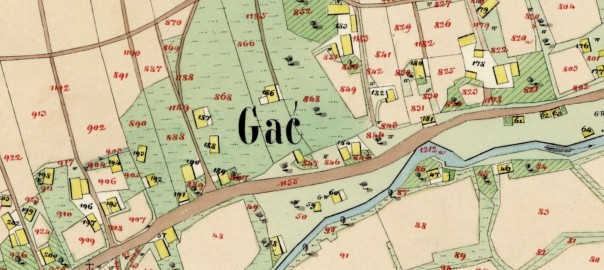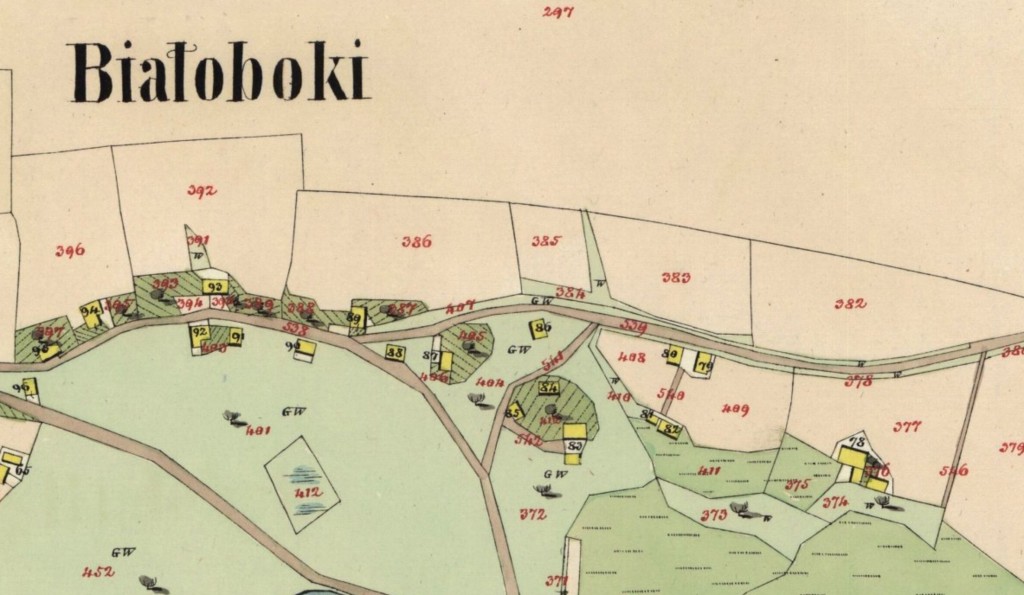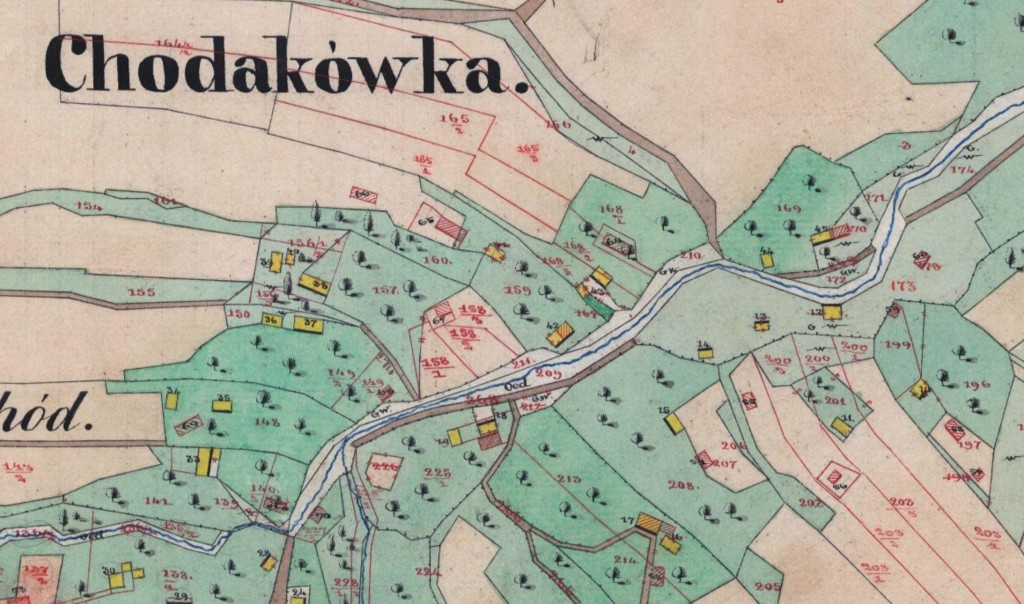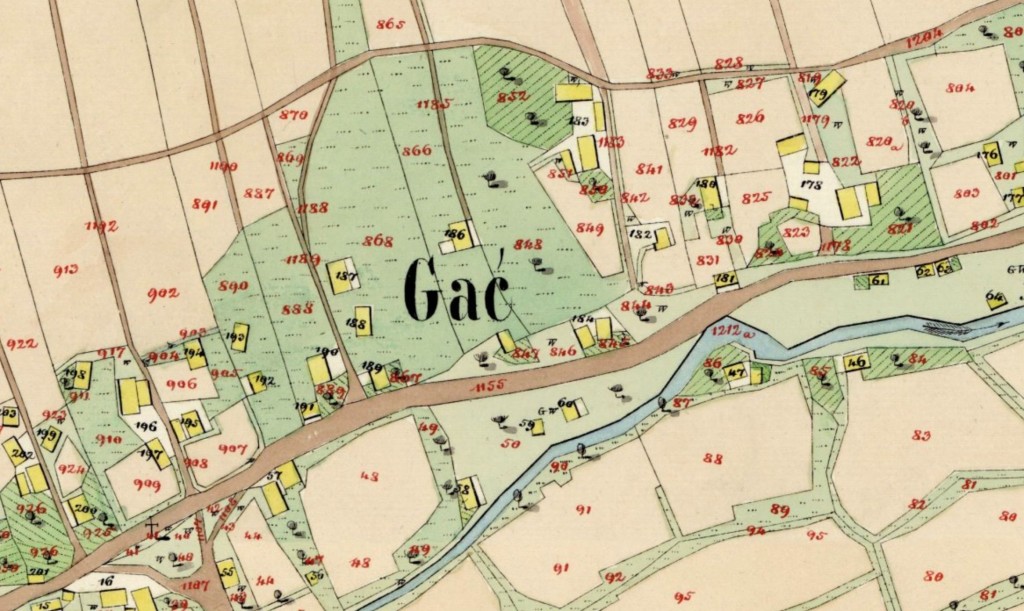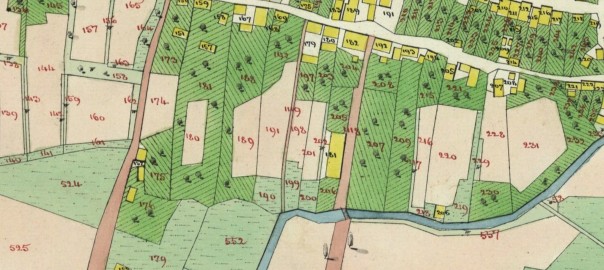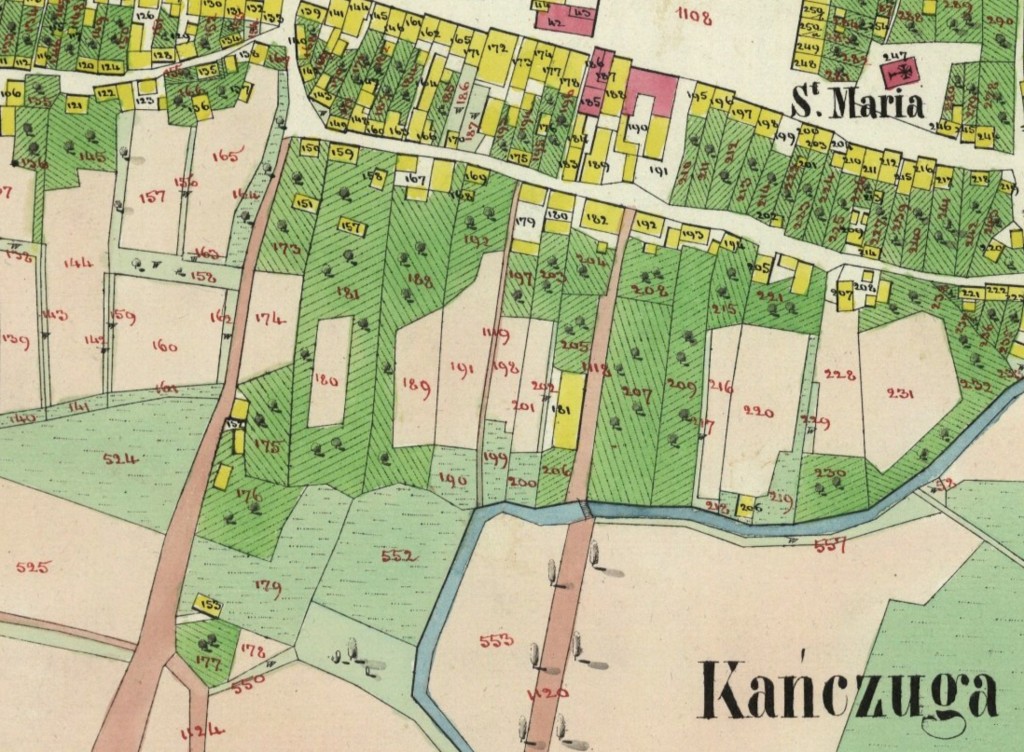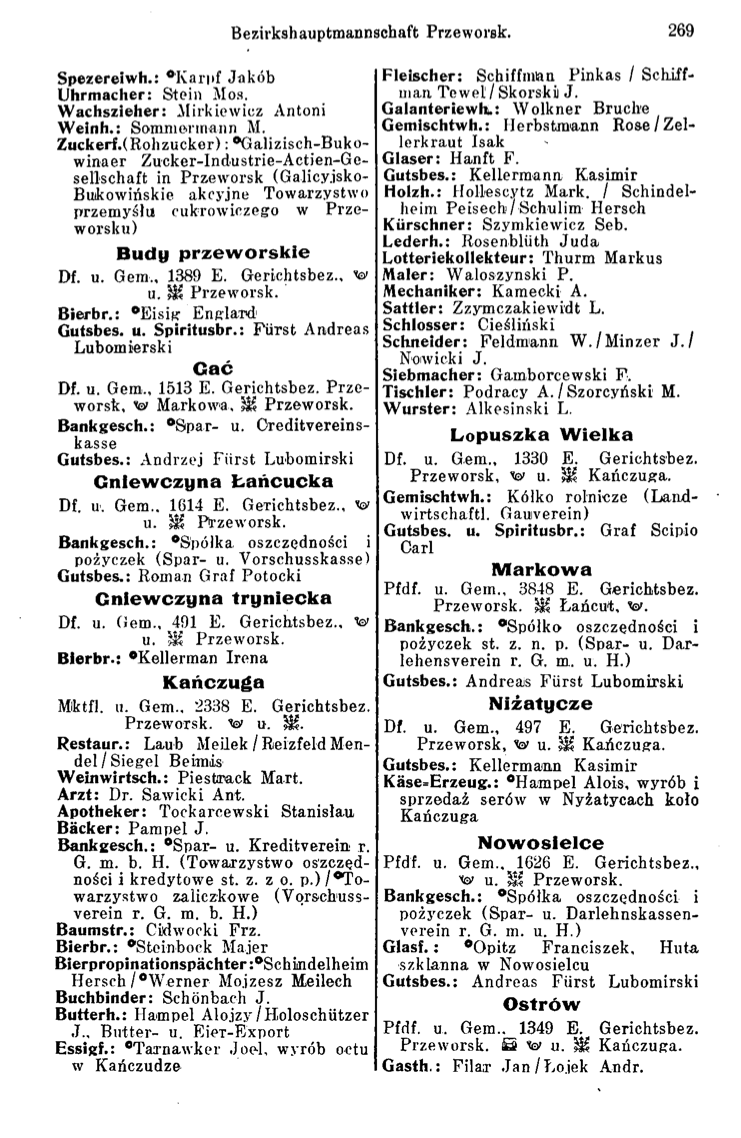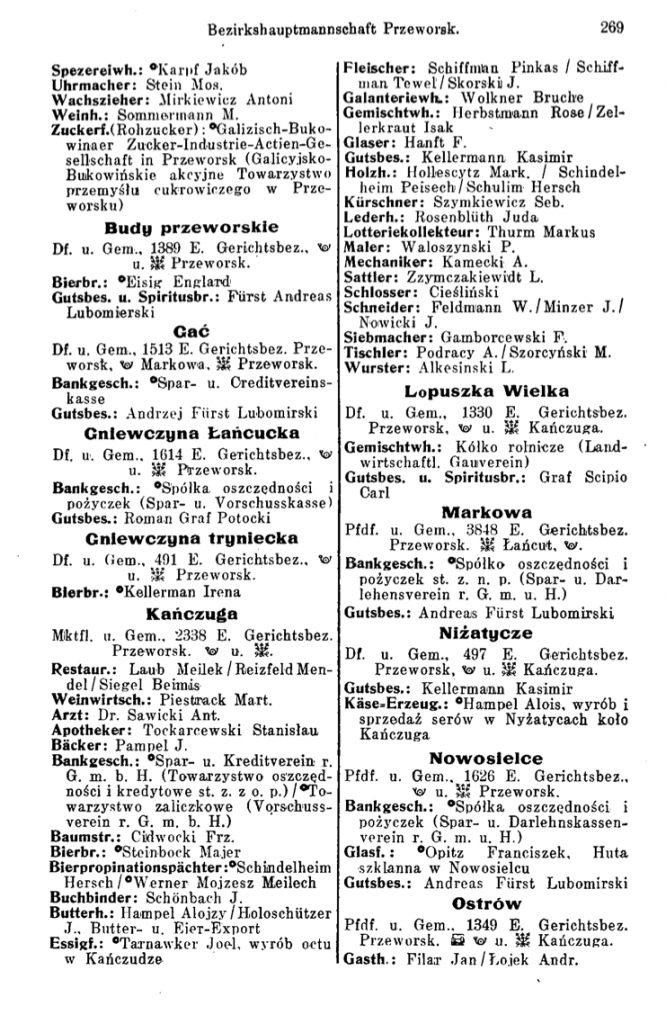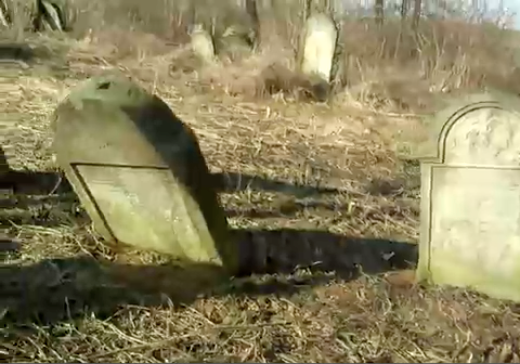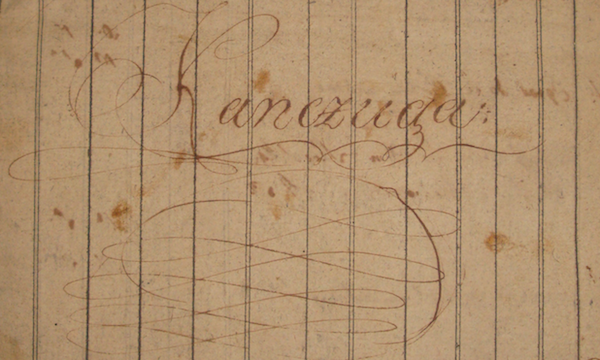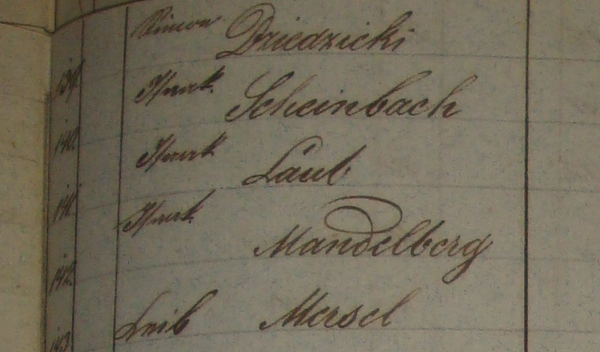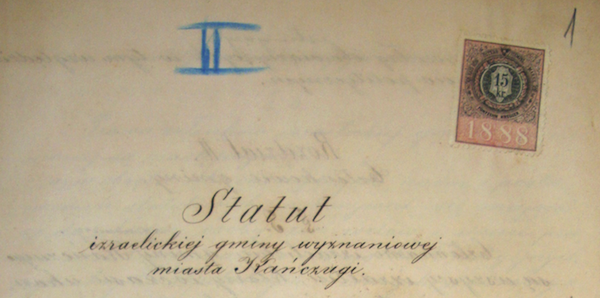The Federal Archives in Germany has an online Memorial Book, listing as they state on the site “Victims of the Persecution of Jews under the National Socialist Tyranny in Germany 1933 – 1945”. This memorial book lists Jewish residents of Germany that were killed by the Nazis, and contains some 170,000 names. Of those names, nineteen names are listed as having been born in Kańczuga, which I’ve listed below.
Keep in mind that these are only those people who were both residents of Germany and were killed by Nazis during the war. This list does not include residents of Kańczuga who were killed by the Nazis who never lived in Germany (most of them) or those residents of Germany that were killed by groups other than the Nazis (such as those massacred post-liberation on Passover in 1945 by local Poles – even if they had lived in Germany).
If you click on the Details link, it will take you to the page on the Federal Archives web site with details on the person, including if known where they lived before the war, and where to and when they were deported during the war.
| Surname | Given Name | Maiden Name | Birth Date | URL |
|---|---|---|---|---|
| Ament | Herz | 1893-01-06 | Details | |
| Dorner | Breindel Bertha | Zellerkraut | 1873-02-10 | Details |
| Endzweig | Ruchla | Westreich | 1897-12-09 | Details |
| Fränkel | Miriam | Turen | 1901-01-21 | Details |
| Friedmann | Efroim Ephraim | 1881-09-24 | Details | |
| Fuhrmann | Benzion Bruno | 1894-08-06 | Details | |
| God | Feiga | Münzer | 1896-09-22 | Details |
| Klugmann | Nathan | 1875-08-16 | Details | |
| Neumann | David | 1893-02-25 | Details | |
| Neumann | Pessel Paula | Neumann | 1888-06-26 | Details |
| Neumann | Uscher | 1896-02-25 | Details | |
| Pack | Simon Simcha | 1911-10-15 | Details | |
| Pelz | Regina Rifka | Münzer | 1888-01-03 | Details |
| Rauch | Fanny Feiga | Wiesenfeld-Karthagener | 1886-05-08 | Details |
| Saleschütz | Chana Hanna | 1904-02-22 | Details | |
| Sommer | Feige | Münzer | 1897-11-21 | Details |
| Steinberg | Ida | Dorner | 1908-12-25 | Details |
| Sternheim | Scheindel | Silbermann | 1879-02-05 | Details |
| Wolf | Laja Leja | Glanzberg | 1895-01-05 | Details |
